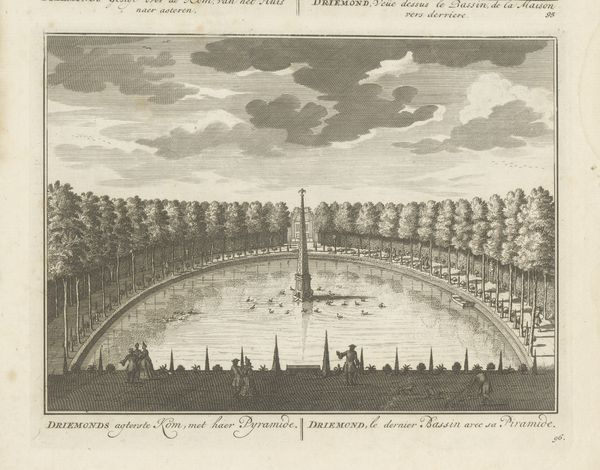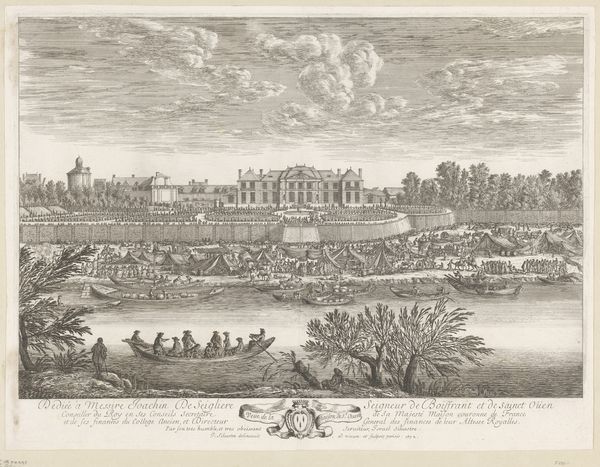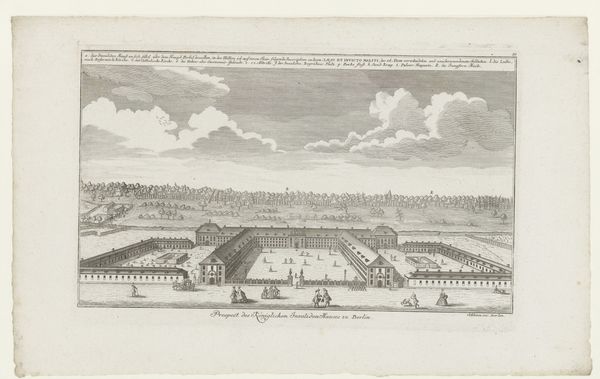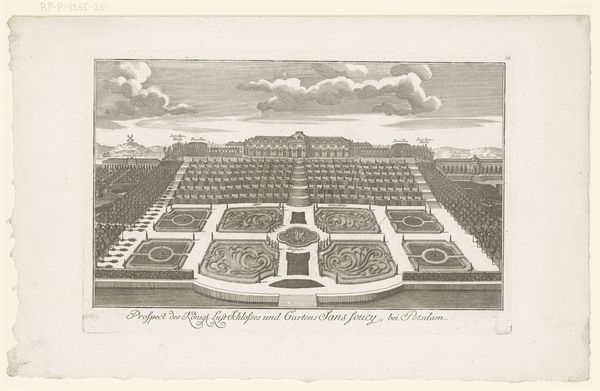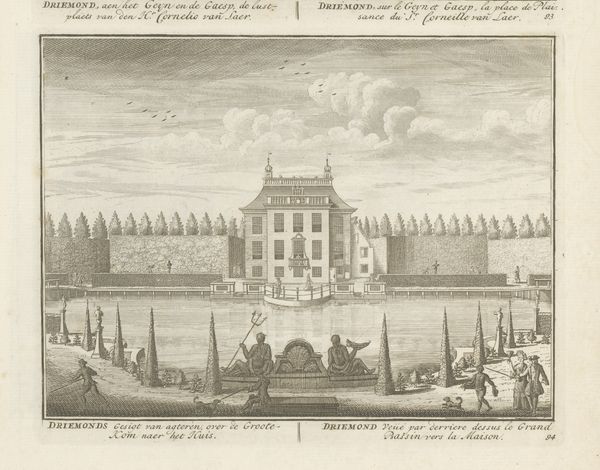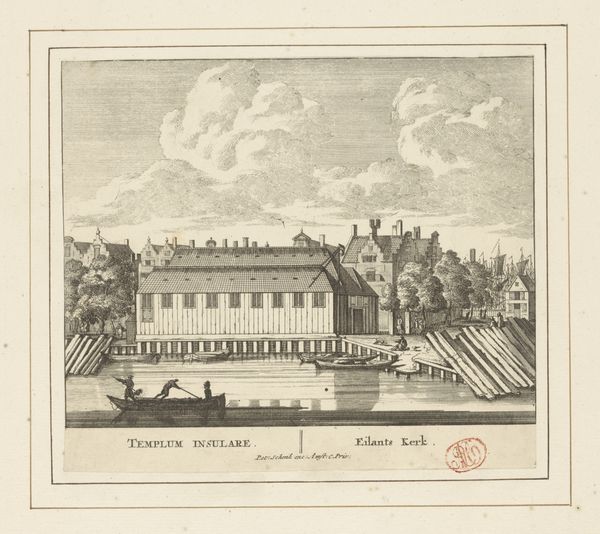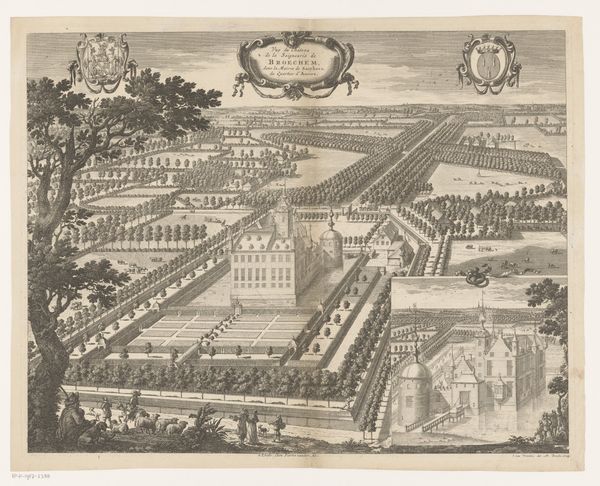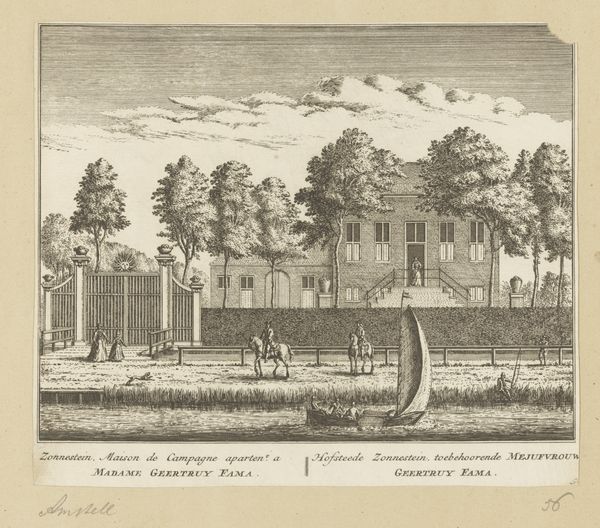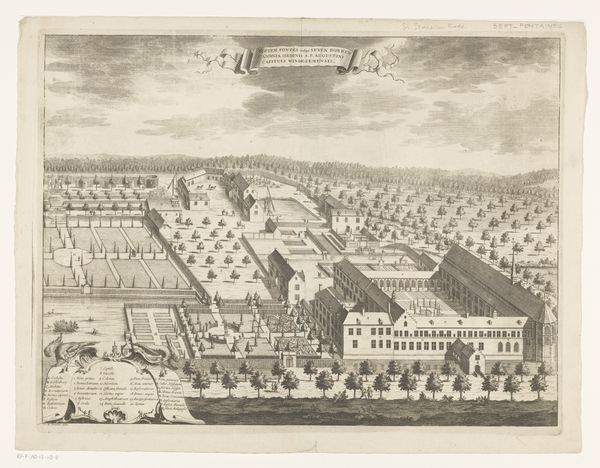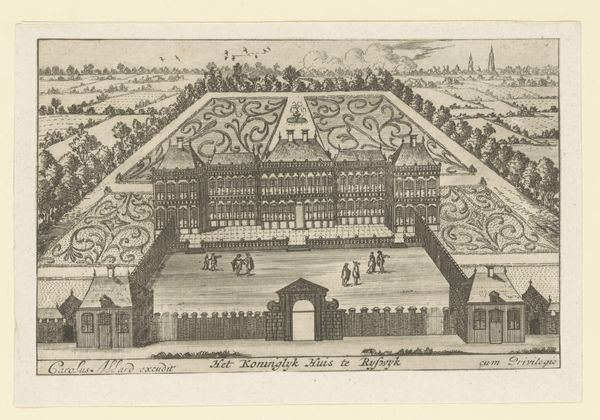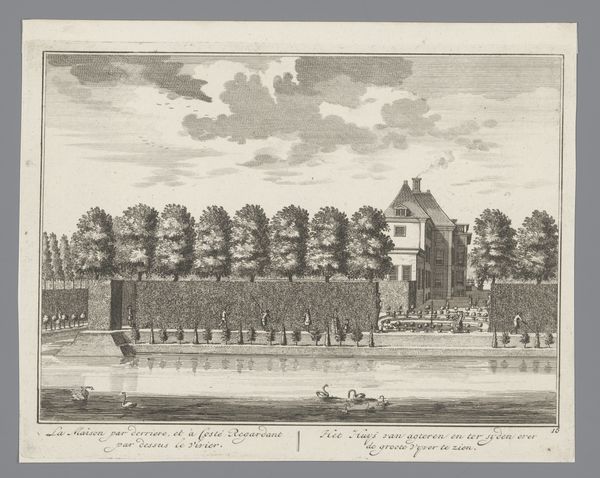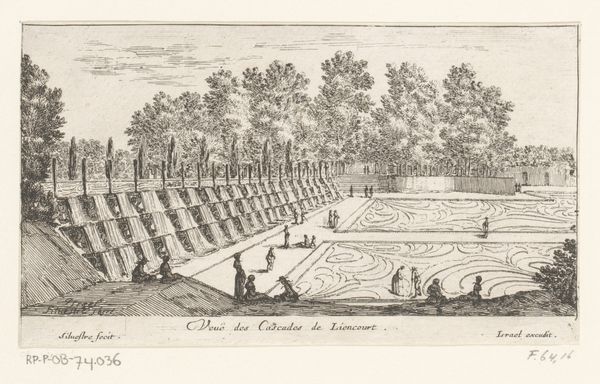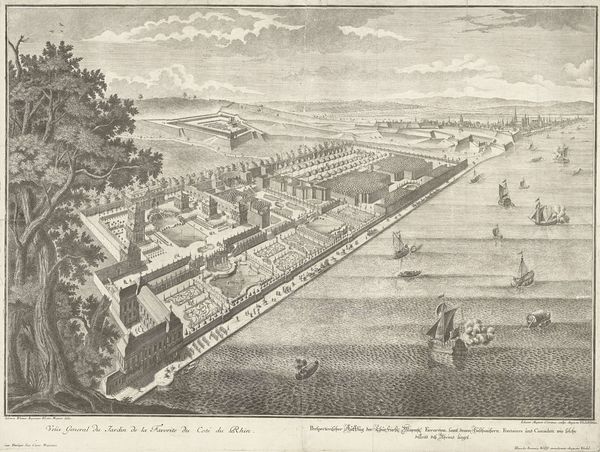
print, engraving
#
baroque
# print
#
landscape
#
engraving
Dimensions: height 170 mm, width 205 mm
Copyright: Rijks Museum: Open Domain
Editor: We’re looking at "View of the Garden of Rosendael Castle from the Great Hall," an engraving by Jan (I) Smit, made around 1718. It’s incredibly detailed! What strikes me most is the deliberate organization of the landscape, how rigorously it's planned and cultivated. What stands out to you? Curator: What grabs my attention is the sheer labor that went into constructing such a perfectly controlled natural environment. Look at the materiality: the print itself, the result of meticulous engraving. Then think of the resources required to shape a garden on this scale. Who labored to produce such landscape? How were their efforts consumed? Editor: So, you see the garden not just as a landscape, but as a product of labor? Curator: Precisely! The artist is depicting a site of massive, controlled, and consumed effort. These manicured hedges, the elaborate fountains, the very land itself was sculpted. This wasn’t 'found' nature, but made by somebody. The image is a record of ownership, social control, and consumption on a grand scale, enabled through exploitable labour, captured by exploiting raw materials. Editor: That’s a fascinating take. It really changes how I see the image. Curator: The print also invites consideration of consumption on the part of the viewers. Who would purchase this print and why? What does ownership of the image accomplish? How do we read the depiction in 2024? What do you take away from all of this? Editor: I am interested in this conversation because now I am understanding the context surrounding the artwork more. I understand the economic and social underpinnings of its production and that completely enriches its historical significance to me. Curator: Excellent! Focusing on material realities can reveal deeper meaning and provoke valuable insights.
Comments
No comments
Be the first to comment and join the conversation on the ultimate creative platform.
